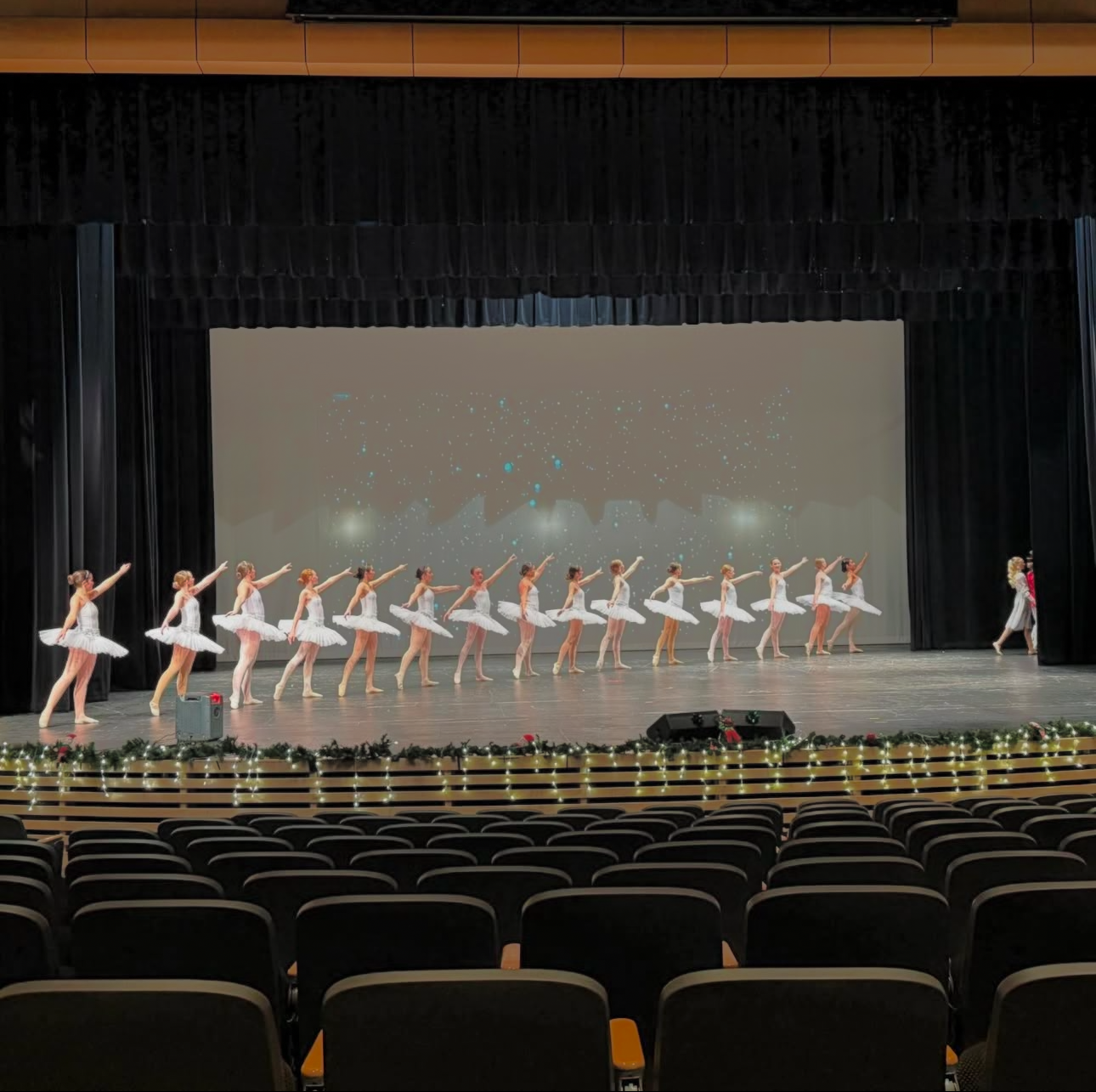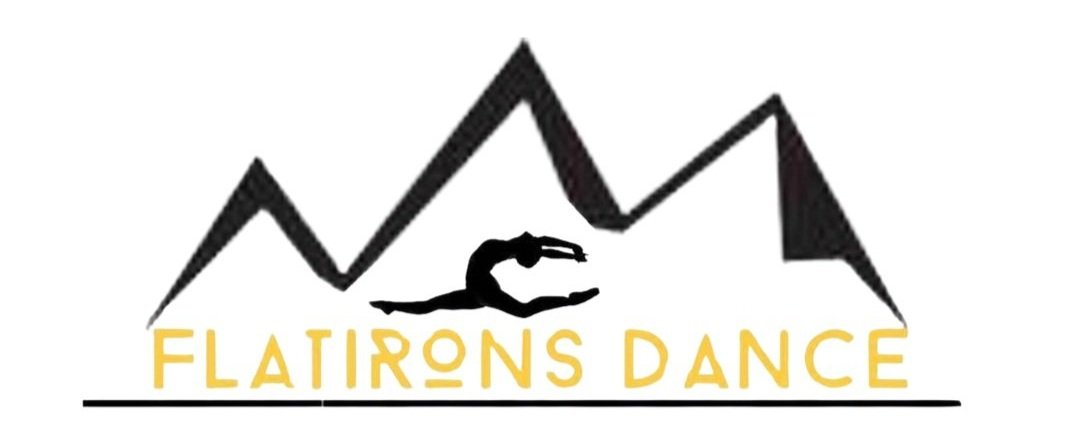
Ballet Program
Our ballet program is designed to give dancers an appreciation for the tradition and grace of ballet technique while progressing them through age-appropriate levels. We believe ballet is essential for all dancers to become well-rounded and strong dancers. All ballet classes follow classical structure, beginning with barre, adagio, petite allegro, and grand allegro and finishing with reverence. Students may move up to the next level after mastering skills specific to their level and following teacher recommendations.
For questions, reach out to:
Lizzy Whistance - Ballet Director
720-340-6003
balletbyliz@gmail.com
Students 11 years and older with no prior ballet experience may start their ballet training here at FDA! We offer a beginning ballet class for ages 11 and older that begins at the basics and progresses through ballet technique at an age-appropriate level. It is never too late to start your ballet training; dancers may begin at any age in this class and transition into our level system once they are ready.
It’s never too late to start ballet!
Beginning students aged 6-8 years old will start in Ballet I. This class is designed to lay a strong foundation of vocabulary and skills in a fun environment that will prepare dancers to move on to Ballet II once they turn 9. Ballet II takes the skills from level 1 and builds upon them, adding more steps and linking longer combinations. Dancers will stay in Ballet II for ages 9 to 11 years. Dancers 9 years old and brand new to ballet should take one year of Ballet I to begin. Ballet III is designed for dancers ages 11-13 who have finished Ballet II at FDA or had prior ballet experience. Students who are enrolled in Ballet III have an option to enroll in pre-pointe. Pre-pointe is an add-on class to Ballet III that focuses on alignment and strength training to prepare students for safe pointe work and evaluate students for demi-pointe shoes. Pre-pointe is must be taken in combination with another ballet class (levels III-V). Students will be assessed for demi-pointe shoes and required to work in demi-pointe shoes for at least one semester before being evaluated for pointe shoes. Ballet IV is for dancers who are 13 years and older, have finished Ballet III at the FDA, or have prior experience. In Ballet IV, dancers refine their technique and continually add more challenging movements to their ballet vocabulary. Advanced dancers may progress to Ballet V once they have mastered the skills in level IV with excellence. Dancers evaluated for Pointe shoes and enrolled in Ballet IV or V can add Pointe. Pointe is an add-on to our ballet levels and must be combined with another class. Pointe is not required at FDA, and dancers may progress through the levels without adding pointe. Dancers are expected to stay on the same level for more than one year.
Program Overview
Level Breakdown
Ballet I (6-8yrs) - 1hr
Ballet II (9-11yrs) - 1hr
Ballet III (11-13yrs) - with prior experience 1hr
option to add Pre-pointe (11+) - with teacher approval 1.5hr
Ballet IV (13+) - with teacher approval 1.5hr
option to add Pre-pointe (11+) - with teacher approval 1.5hr
Ballet V (13+) - with teacher approval 1.5hr
Beginning Teen Ballet (11+) - no required experience 1hr
Pre-Point & Pointe With Teacher Approval 1.5hr
Ballet Dress Code Policy:
Being correctly dressed for ballet is just like being dressed adequately for any sport- we want to ensure our dancers are prepared, safe, and confident! When you wear ballet attire, you respect the tradition, practice professionalism, and give your teacher the best opportunity to correct and coach you.
Dress Code:
Hair pulled in a high or low ballet bun
Attire:
Leotard
Pink ballet tights
A ballet skirt is optional
Pink ballet slippers
NO baggy clothes
NO jeans
NO Ponytails
Dancers Out of Dress Code:
The teachers will talk to dancers outside of the dress code the first time and help them plan for the next class.
The next time dancers are out of dress code, they will need to purchase the items they are missing from us and change before joining the class.
The dancer's account will be charged:
Ballet Shoes: $30
Tights: $10
Ballet Skirt: $30
Leotard: $30
Pre-Pointe and Evaluations
Any dancers wishing to begin pre-pointe must be at least 11 years old. To enroll in pre-pointe, dancers must also be enrolled in a ballet class levels III-V. During their first semester in pre-pointe, dancers will be able to schedule a baseline evaluation. Evaluations are a tool we use to make sure dancers are able to track their progress to demi-pointe and pointe shoes. The baseline evaluation is designed to give students an idea where they are at on their journey to pointe and what steps that can take to reach their goal.
Demi-pointe Shoes
Demi-pointe shoes help dancers understand bending the foot at the metatarsal-tarsal line (instead of below the heel, which is how most dancers learn to point their feet). This is very important for work en pointe, as the tarsal-metatarsal line is essential to control and strengthen for pressing onto the box. Dancers also gain an understanding of pressing their sesamoid bones into the shoe and how this pressure lifts them out of the shoe (instead of bearing down on the big toe). These shoes also feel like pointe shoes, which are highly different from flat shoes. This is important because dancers must learn to be comfortable dancing in heavier, bulkier, and tighter shoes so their nervous system can fully concentrate on the movement (instead of overloading the nervous system with sensory signals saying the shoes are uncomfortable). Because demi-pointe shoes are heavier, they pull on the hip more than a flat shoe. This pull strengthens the upper and lower leg muscles before adding pointe shoes. It also gives dancers time to build awareness of holding correct alignment and rotation with an extra weight on their feet.
Once a teacher has approved a dancer for a demi-pointe shoe evaluation, they will schedule a 30-minute private session ($35 payable on ClassBug) outside of class time with the ballet director.
Dancers train in demi-pointe shoes for 1-3 semesters. Some may need to train in demi-pointe shoes for longer, depending on how quickly their body builds strength and how many hours of ballet they take. Dancers will likely not need to train in demi-pointe shoes as long as they take 2+ hours of ballet a week.
Pointe Shoes
Once a dancer has gained strength and awareness from training in demi-pointe shoes, their teacher will approve them for a pointe shoe evaluation.
Dancers will demonstrate their strength and skill for safe pointe work in a one-on-one setting and will be approved to be fitted for pointe shoes.
Our priority when evaluating a student for pointe shoes is their safety. Dancing en pointe doubles the pressure put on the knees and ankles, two of a dancer's most important joints! A dancer must have strong enough muscles to hold correct alignment and rotation while dancing in flat shoes before transitioning to demi-pointe shoes and pointe shoes to prevent injury. Our second priority when evaluating a student for pointe shoes is their success en pointe! At FDA, we want our dancers to feel safe, strong, and confident when they begin working in pointe shoes. This is why dancers must develop a solid foundation in ballet technique before transitioning to pointe. We are continually updating our ballet program to ensure we do our best to prepare our dancers to feel safe, strong, and confident– and to flourish en pointe!
While we strive to adhere to this program, we understand that each dancer's individual needs are different. Special consideration will be given to dancers joining us with prior experience, and exceptions may be made for unique circumstances.

